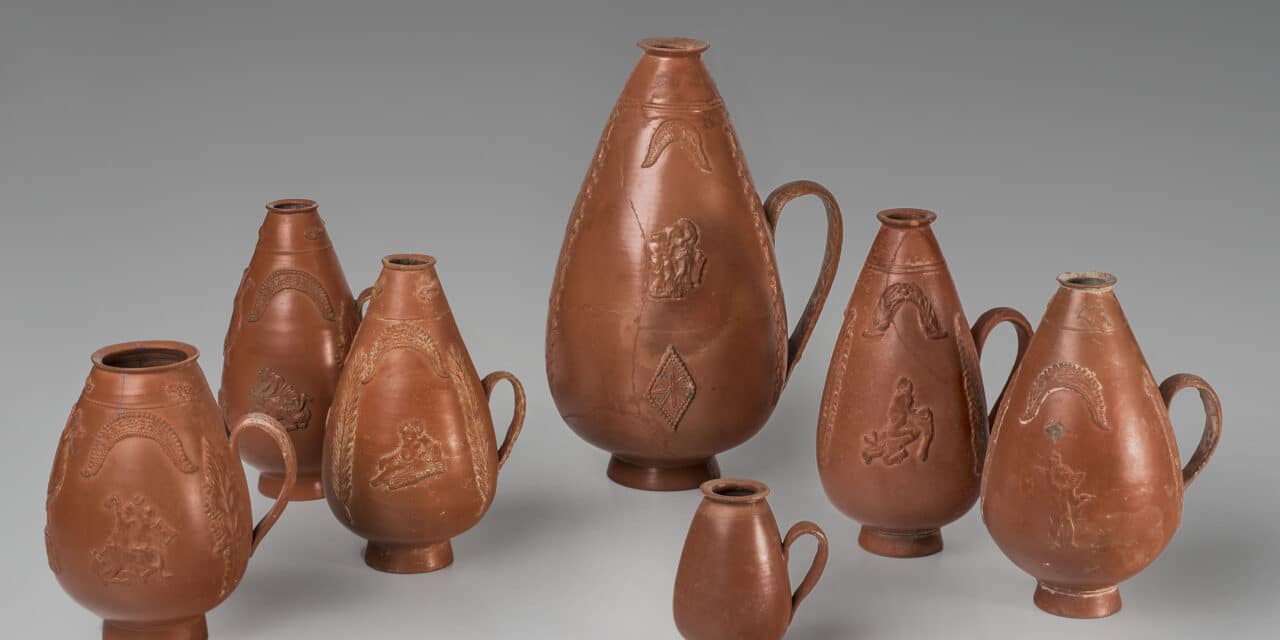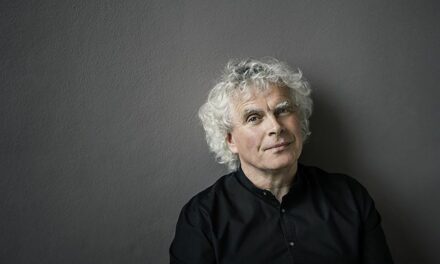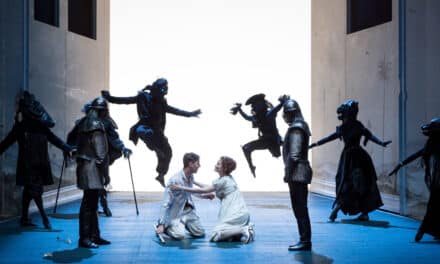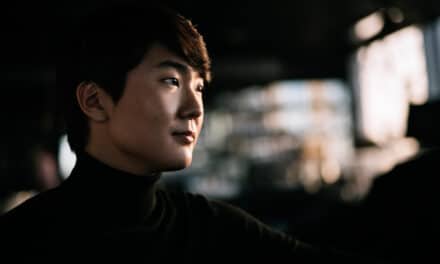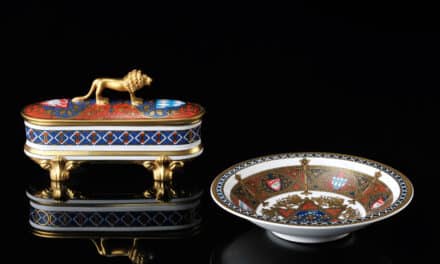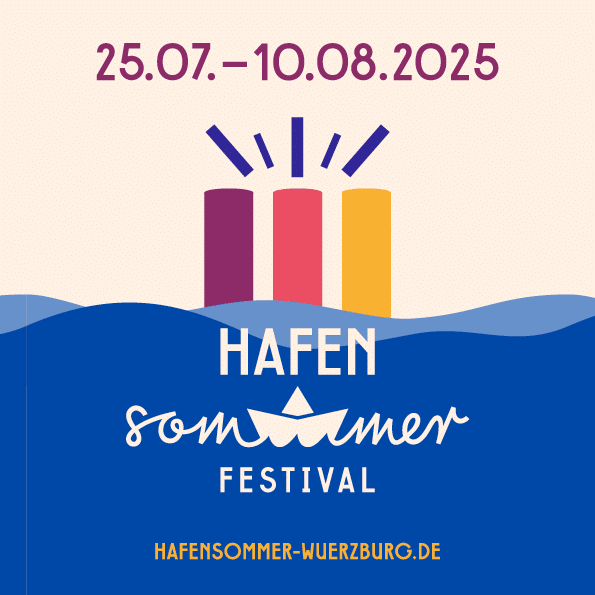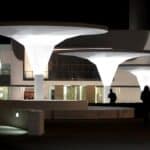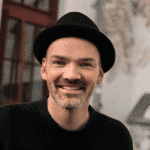Die Ausstellung Zirkus bis Apostel. Terra Sigillata aus der Sammlung K. Wilhelm präsentiert erstmals umfassend eine der weltweit bedeutendsten Sammlungen römischer Terra Sigillata-Gefäße, die den Antikensammlungen im Jahre 2020 vom Münchener Arzt und Sammler Prof. Dr. Klaus Wilhelm als Geschenk überlassen wurde. Zur Schenkung gehören auch an die 50 Lampen italischer und nordafrikanischer Herkunft.
Der bayerische Kunstminister Markus Blume betonte bei einer ersten Ausstellung im Pompejanum Aschaffenburg im Jahre 2022, auf der lediglich eine kleine Auswahl der Sammlung, gezeigt wurde: „Die Schenkung von Klaus Wilhelm an die Staatlichen Antikensammlungen München ist ein besonderer Glücksfall. Die einzigartige Zusammenstellung nordafrikanischer Tongefäße versprüht den Geist des leidenschaftlichen Sammlers und Kunstkenners. Ich freue mich sehr, dass künftig alle Kunstinteressierten daran teilhaben können … Klaus Wilhelm danke ich herzlich für diese großzügige Geste!“
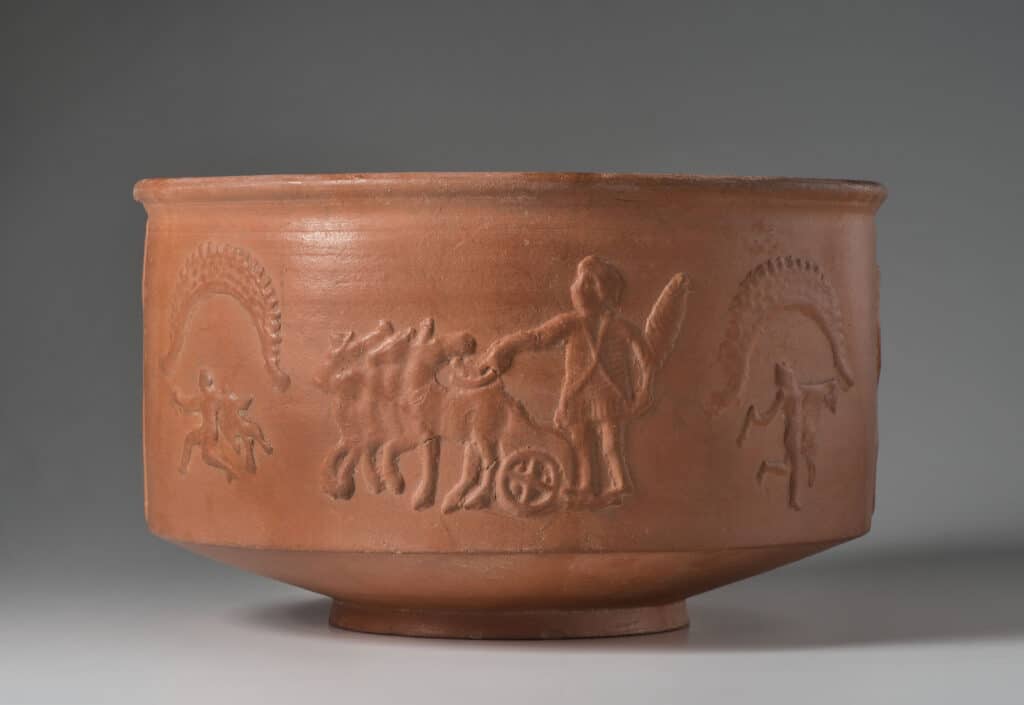
Die Schüssel ziert die Darstellung eines siegreichen Wagenlenkers. Die Reliefs wurden Modeln geformt und auf den getöpferten Gefäßkörper appliziert; spätes 2./ frühes 3. Jh. n. Chr.; hergestellt wohl in Nordosttunesien. © Staatliche Antikensammlungen und Glyptothek München, Renate Kühling
Über Jahrhunderte hinweg war die gezeigte Terra Sigillata aus Nordafrika, die mit einer Engobe überzogen wurde und daher eine rot glänzende Oberfläche besitzt, im ganzen Mittelmeerraum gefragt. Ihre hohe Qualität, ihre durch den harten Brand bedingte Haltbarkeit, sowie ihre variantenreichen Formenserien und Dekorationsarten machten sie zu ständigen Begleitern bei römischen Gastmählern. Teller, Tabletts, Platten, Schalen, Schälchen und die selteneren Krüge und Kannen geben uns eine Vorstellung vom reich gedeckten Tisch der Römer. Das tönerne Tafelgeschirr stammt aus den Provinzen Africa Proconsularis und Byzacena, dem heutigen Tunesien, konnte in großer Stückzahl angefertigt werden und wurde so erschwinglich. Die teils äußerst dünnwandigen Gefäße ahmten in Form und Dekor Objekte aus kostbarem Material wie Silber, Elfenbein oder Glas nach, das sich nur die Reichsten leisten konnten. Sie waren also Luxus für jedermann.
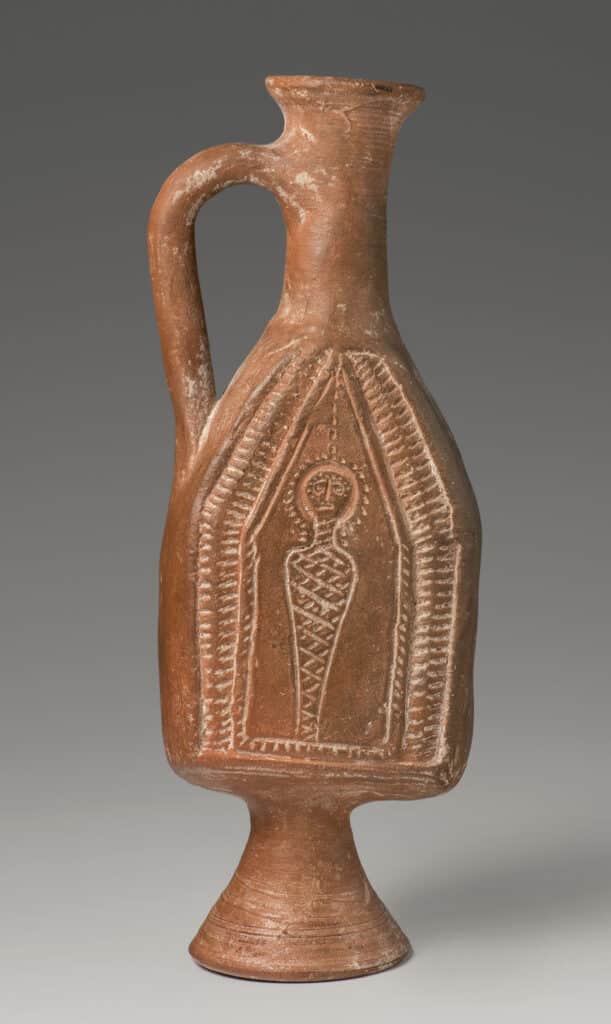
Der flache Krug wurde in zwei Matrizen aus Gips geformt. Beide Seiten zeigen eine stilisierte Ritzung des Hl. Lazarus, der in Leichenbinden eingewickelt ist; 1. Hälfte 6. Jh. n. Chr.; hergestellt in Zentraltunesien. © Staatliche Antikensammlungen und Glyptothek München, Renate Kühling
Produziert wurde in hochspezialisierten Werkstätten, die zunächst in Nordosttunesien entstanden. Zum Exportschlager wurde aber besonders die applikenverzierte Ware aus Zentraltunesien. Die Werkstätten in Sidi Marzouk Tounsi sind inzwischen als Herstellungsort der Mehrzahl der Objekte in der Ausstellung identifiziert. Die detailreichen, figürlichen Motive wurden gesondert in Matrizen aus Gips oder Ton geformt und als Appliken aufgebracht. Sie zeigen unter anderem Gestalten aus dem Mythos aber auch gerne Szenen aus dem römischen Zirkus, also Wagenrennen und Tierhatzen. Diese waren im römischen Afrika besonders beliebt, sodass einzelne Gefäße sich an spezielle ‚Fangruppen‘richteten und an vergangene Siege erinnerten. Seit dem späteren vierten Jahrhundert ergänzen christliche Motive das Repertoire, darunter figürliche Darstellungen der Apostelfürsten Petrus und Paulus oder Märtyrerbilder.
Die Ausstellung Zirkus bis Apostel. Terra Sigillata aus der Sammlung K. Wilhelm informiert über Vorläufer und Produktionsweisen der römischen Feinkeramik aus Nordafrika; ein weiterer Schwerpunkt liegt auf dem reichen Bilderschmuck. In ihm wird nicht zuletzt der Wandel von einer heidnischen zu einer christlich geprägten Lebenswelt deutlich. Die vorzüglich erhaltenen Gefäße und Lampen der Sammlung Wilhelm, ergänzt um Leihgaben aus verschiedenen Museen Deutschlands, gewähren den Besucherinnen und Besuchern einen faszinierenden Einblick in eine längst vergangene Alltagswelt, der man ihre Freude an ausgefallenen Formen und Bildern anmerkt. Kinderpfad, Entdeckerblatt und Mitmachstationen wurden in Zusammenarbeit mit dem Museumspädagogischen Zentrum entwickelt und sprechen die jüngeren
Besuchergruppen an.
5. Juli 2023 bis 14. April 2024
www.antike-am-koenigsplatz.mwn.de
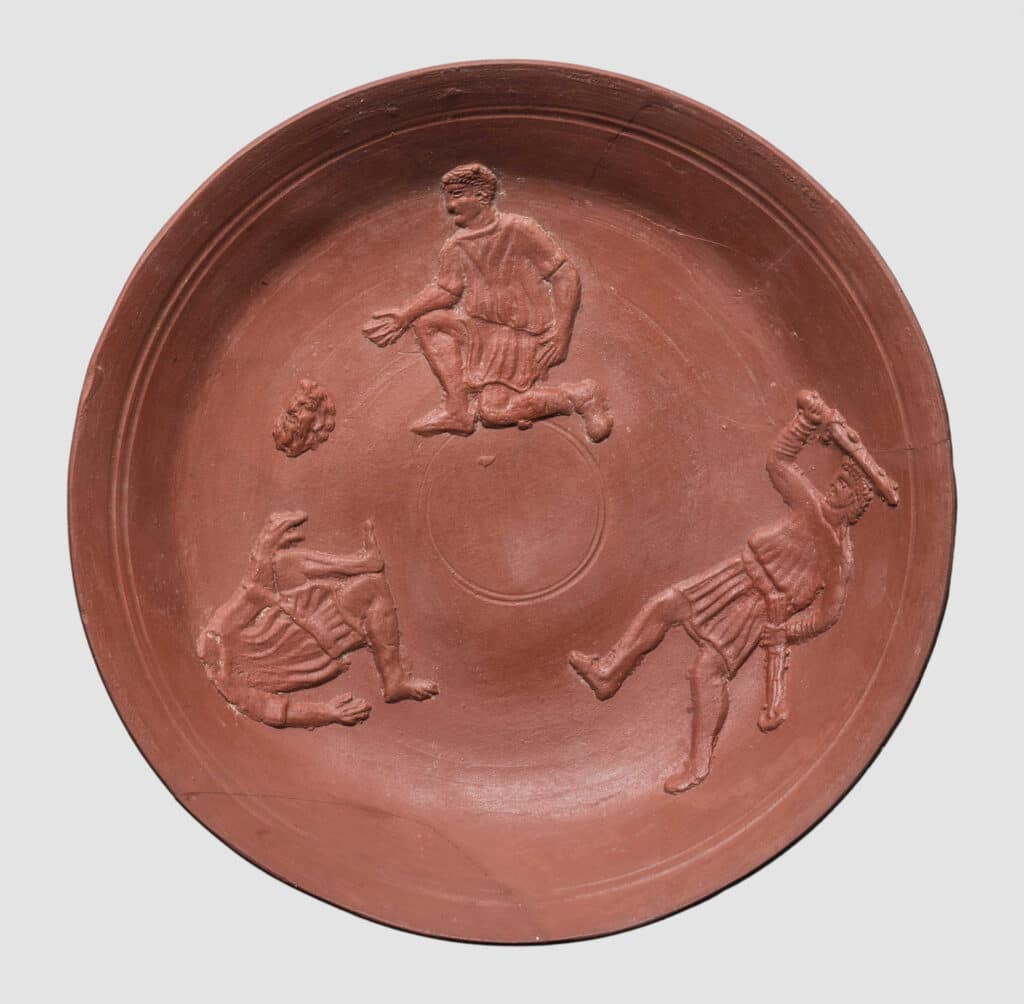
Schale mit Darstellung einer Enthauptung; vielleicht ist einer der vielen afrikanischen Märtyrer gemeint; spätes 4. / frühes 5. Jh. n. Chr.; hergestellt in Sidi Marzouk Tounsi (Zentraltunesien). © Staatliche Antikensammlungen und Glyptothek München, Renate Kühling

